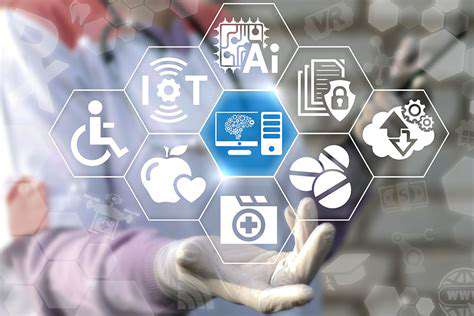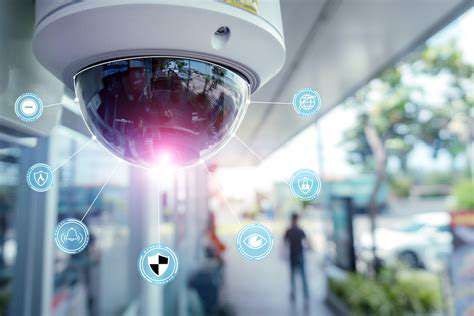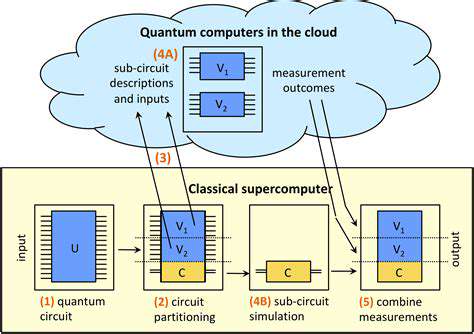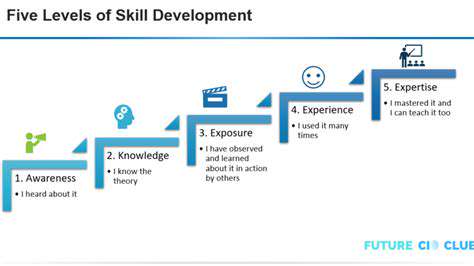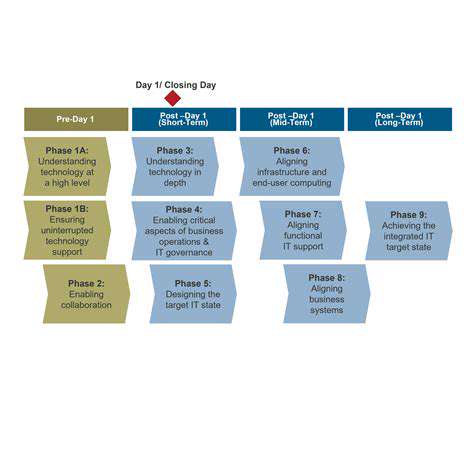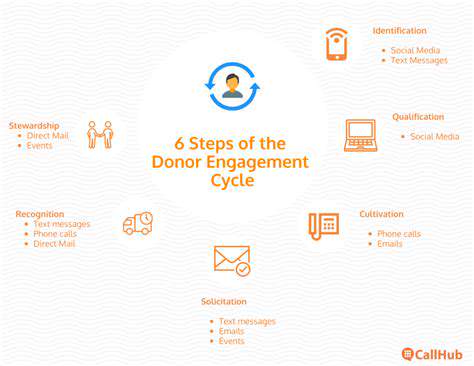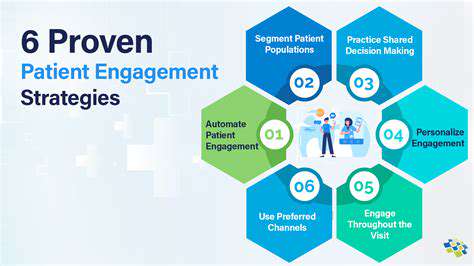Decentralized Processing for Faster Insights
Improving Real-Time Data Analysis
In today's fast-paced healthcare environment, decentralized processing has emerged as a transformative approach for handling critical patient information. Unlike traditional centralized systems that rely on distant servers, this method enables healthcare teams to analyze vital signs and medical records right where the data originates - whether that's a hospital ward, clinic, or even a patient's home.
The immediate availability of processed information allows medical professionals to respond to changing patient conditions without delay. This rapid response capability proves particularly valuable in emergency departments where every second counts. When dealing with stroke patients or cardiac cases, the ability to interpret diagnostic results on-site can mean the difference between complete recovery and permanent disability.
Enhanced Data Security and Privacy
Medical institutions face increasing pressure to protect sensitive health records from cyber threats. Decentralized systems address this challenge by limiting data movement across networks. Instead of transmitting complete patient files to central repositories, only essential processed information travels beyond the local environment.
This localized approach aligns perfectly with strict privacy regulations like HIPAA and GDPR, as it significantly reduces opportunities for interception during transmission. Modern encryption techniques implemented at the device level provide additional safeguards, ensuring that even if a breach occurs, the information remains unintelligible to unauthorized parties.
Reduced Network Congestion
Healthcare networks often struggle under the weight of enormous data transfers, particularly during peak hours. Decentralized processing alleviates this strain by performing initial analysis at the edge. Rather than flooding central systems with raw data streams, edge devices send only the most relevant processed information.
This selective transmission approach proves especially beneficial in intensive care settings where multiple monitoring devices generate continuous data. By filtering and processing this information locally, medical staff receive streamlined alerts and summaries rather than overwhelming raw data feeds.
Improved Scalability and Flexibility
The modular nature of decentralized systems allows healthcare providers to expand their capabilities incrementally. As patient volumes grow or new monitoring technologies emerge, facilities can add edge processing units without overhauling their entire infrastructure.
This scalability proves particularly advantageous for rural clinics and smaller practices that need to adapt to changing requirements but lack the resources for major system upgrades. The ability to implement targeted expansions helps maintain high-quality care while controlling costs.
Cost-Effectiveness and Resource Optimization
Healthcare administrators constantly balance the need for advanced technology with budgetary constraints. Decentralized processing offers financial advantages by reducing reliance on expensive cloud services and high-bandwidth connections.
Local processing eliminates recurring cloud storage fees for raw data while minimizing the need for costly network infrastructure upgrades. These savings allow facilities to redirect funds toward patient care initiatives and staff development.
Real-time Monitoring and Predictive Analytics
Modern healthcare increasingly emphasizes preventive measures and early intervention. Decentralized systems support this shift by enabling continuous analysis of patient metrics. Rather than waiting for periodic check-ups, clinicians can monitor trends and receive alerts about concerning patterns.
This proactive approach proves particularly valuable for managing chronic conditions like diabetes or heart disease. By detecting subtle changes in vital signs or medication effectiveness, care teams can adjust treatment plans before complications arise.
Improved Security and Privacy through Decentralization

Enhanced Encryption Protocols
Contemporary encryption methods form the foundation of secure healthcare data systems. Advanced encryption standards like AES-256 provide military-grade protection for sensitive medical records. These algorithms transform readable information into complex code that remains secure even against sophisticated cyber attacks.
Advanced Authentication Mechanisms
The healthcare sector is moving beyond password-only systems to more robust verification methods. Multi-factor authentication now combines traditional credentials with biometric checks and device verification. Facial recognition and fingerprint scanning offer particularly strong protection for accessing critical patient records.
Improved Data Loss Prevention (DLP) Systems
Modern DLP solutions act as digital sentries for healthcare organizations. These intelligent systems monitor data flows and automatically block suspicious transfer attempts. By creating detailed audit trails and enforcing strict access policies, DLP tools help prevent both accidental leaks and malicious data exfiltration.
Privacy-Preserving Design Principles
Forward-thinking healthcare systems now incorporate privacy considerations from the initial design phase. This approach minimizes data collection to only what's absolutely necessary for patient care. Purpose limitation and data minimization principles ensure that sensitive information isn't retained longer than clinically required.
Secure Data Storage and Management
Protecting stored medical data requires multiple defensive layers. Encryption at rest, strict access controls, and comprehensive backup systems work together to safeguard information. Regular security audits and staff training programs help maintain these protections over time.
Real-World Applications in Telehealth and Remote Patient Monitoring
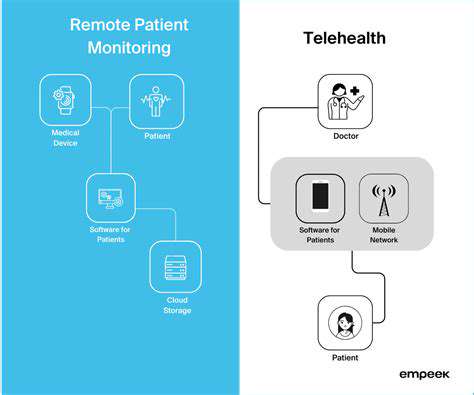
Telehealth in Remote Healthcare
Virtual care platforms are eliminating geographic barriers to quality healthcare. Patients in isolated communities can now consult with specialists hundreds of miles away through secure video connections. This technology proves particularly valuable for follow-up visits and routine check-ups that don't require physical examinations.
Telehealth in Chronic Disease Management
Managing long-term health conditions requires consistent monitoring and timely intervention. Remote patient monitoring devices allow clinicians to track vital statistics and medication adherence without frequent office visits. This continuous data stream enables more personalized treatment adjustments and early identification of potential complications.
Telehealth in Mental Health Services
The convenience and privacy of virtual therapy sessions have significantly improved access to mental healthcare. Patients dealing with anxiety, depression, or PTSD often feel more comfortable discussing sensitive issues from their own homes. Digital platforms also facilitate support group meetings and crisis counseling for individuals who might otherwise avoid seeking help.
Telehealth in Urgent Care and Emergency Services
Triage nurses and emergency physicians now use telehealth to assess non-critical cases before patients arrive at hospitals. This preliminary evaluation helps emergency departments prioritize resources and prepare for incoming cases. Virtual consultations can also provide immediate guidance for parents dealing with pediatric emergencies at home.
Telehealth in Healthcare Education and Training
Medical education has embraced virtual learning platforms to train the next generation of healthcare providers. Interactive simulations and virtual reality environments allow students to practice complex procedures in risk-free settings. This technology also enables experienced professionals to share their expertise across geographic boundaries through remote mentoring programs.
Challenges and Future Considerations

Economic Viability
Implementing advanced healthcare technologies requires careful financial planning. Organizations must balance innovation with sustainable budgeting. This includes considering both upfront costs and ongoing maintenance expenses while identifying potential revenue streams to support continued operation.
Technological Advancements
The rapid pace of medical technology development presents both opportunities and challenges. Healthcare systems must remain flexible enough to incorporate beneficial innovations while maintaining stability for critical operations. Emerging technologies like AI diagnostics and blockchain-based records may significantly transform care delivery in coming years.
Environmental Impact Assessment
As healthcare organizations expand their digital infrastructure, they must consider the environmental consequences. Data centers and electronic devices contribute to energy consumption and electronic waste. Sustainable technology choices and responsible disposal programs can help minimize this ecological footprint.
Community Engagement and Stakeholder Management
Successful implementation of new healthcare technologies requires buy-in from all affected parties. This includes not just medical staff and administrators, but also patients and community members. Transparent communication about benefits and potential limitations helps build trust and facilitates smoother adoption.

